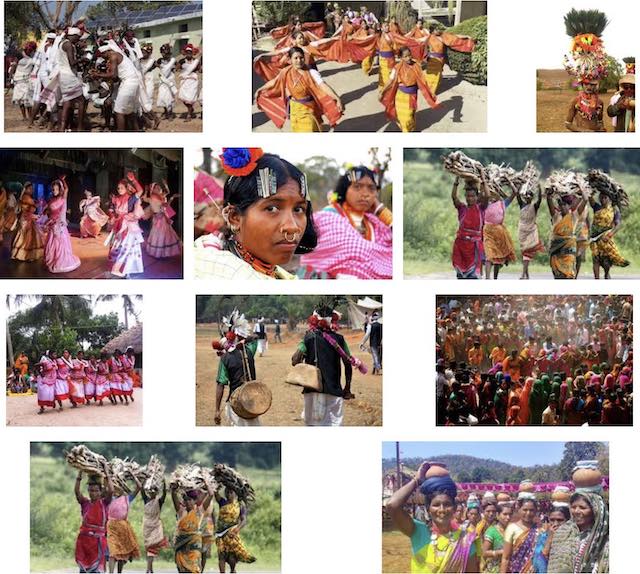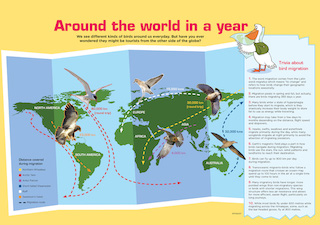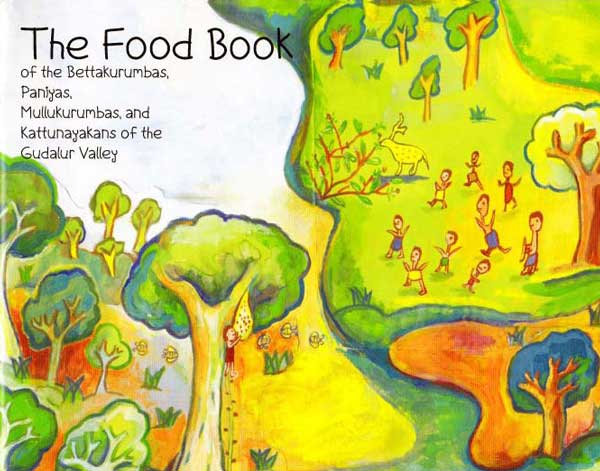An Act to provide for conservation of biological diversity, sustainable use of its components and fair and equitable sharing
This publication contains the Biological Diversity Act, 2002 and the Biological Diversity Rules, 2004 that was promulgated by the Government of India. This document may therefore be reproduced for educational and non-profit purposes without special permission from the National Biodiversity Authority […]
An Act to provide for conservation of biological diversity, sustainable use of its components and fair and equitable sharing of the benefits arising out of the use of biological resources, knowledge and for matters connected therewith or incidental thereto. […]
The Central Government shall develop national strategies, plans, programmes for the conservation and promotion and sustainable use of biological diversity including measures for identification and monitoring of areas rich in biological resources, promotion of in situ, and ex situ, conservation of biological resources, incentives for research, training and public education to increase awareness with respect to biodiversity. […]
Where an offence or contravention under this Act has been committed by a company, every person who at the time the offence or contravention was committed was in charge of, and was responsible to, the company for the conduct of the business of the company, as well as the company, shall be deemed to be guilty of the offence or contravention and shall be liable to be proceeded against and punished accordingly. […]
Source: “The Biological Diversity Act, 2002 and Biological Diversity Rules, 2004” (promulgated by the Government of India, 5 February 2003)
URL: http://nbaindia.org/uploaded/act/BDACT_ENG.pdf
Date visited: 3 March 2021
How to implement the Biodiversity Act across India?
Local bodies take charge of “People’s biodiversity registers” (PBR)
The National Biodiversity Authority (NBA) is set to tell the National Green Tribunal that it created 243,499 biodiversity management committees (BMC) and 95,525 people’s biodiversity registers (PBR) as of January 2020, a source said. The green bench is hearing a case on the full implementation of the Biodiversity Act, 2002. BMCs are created for “promoting conservation, sustainable use and documentation of biological diversity” by local bodies across the country, according to the NBA. […]
The new system [people’s biodiversity registers (PBR) with ‘comprehensive information on availability and knowledge of local biological resources’] will also protect intellectual property rights over traditional knowledge; information will not be shared without consent. […]
Source: “Most biodiversity panels now in place, National Biodiversity Authority to tell NGT” by Ishan Kukreti (Down to Earth, 18 February 2020)
URL: https://www.downtoearth.org.in/news/india/most-biodiversity-panels-now-in-place-national-biodiversity-authority-to-tell-ngt-69334
Date visited: 3 March 2021

Biodiversity fostered by tribal communities >>
Why did you found the center?
Essentially, very little was being done in India in the field of sustainable development. Historically, India’s environmental movement has revolved around wildlife conservation — tigers, leopards, elephants — yet there was little inclusion of sustainability in our models of development.
What were some of the initial obstacles in founding the center?
Changing mindsets. Back in 2003 very few people actually understood what “sustainability” was, and it was often seen as anti-development.
Historically, India’s environmental movement has revolved around wildlife conservation — tigers, leopards, elephants — yet there was little inclusion of sustainability in our models of development. […]
Our task is to retain urban biodiversity and augment it. One of our projects started off as growing native indigenous trees in Mumbai, working with private landowners and corporations. […]
We’ve now started a joint project with the government to create a garden and learning resource center for school children. We’ll teach about edible landscaping, butterfly gardens, sensory gardens, vertical landscapes, and urban bee keeping. We’ll need these concepts as the population rises and the land area shrinks. […]
By and large, the middle class and the educated are changing and becoming an important voice. They are the voice demanding change and action from the government
Excerpts from an interview with Dr. Rashneh Pardiwala, founder and director of the Centre for Environmental Research and Education (CERE) in Mumbai which works with government, educational institutions, multinational companies, and civil society organizations to implement initiatives and projects fostering environmentalism and sustainability:
Source: Rashneh Pardiwala in “Why It’s Hard to ‘Change Mindsets’ on Environmental Protection Among India’s Elites”; interview with Asia Blog on environmental education at the Centre for Environmental Research and Education (CERE Mumbai, founded in 2003)
URL: https://asiasociety.org/blog/asia/interview-why-its-hard-change-mindsets-environmental-protection-among-indias-elites
Date visited: 3 March 2021
[Bold typeface added above for emphasis]
“The practice of religious rituals, ceremonies and sanctions by specific cultural groups allow such sacred landscapes to be maintained, emphasizing that humans are intrinsically part of the ecosystem. Taboos, codes and customs specific to activities and community members restrict access to most sacred groves. […] The inclusion of local people’s needs and interests in conservation planning is increasingly accepted as essential, both to promote the well-being of human populations, and to ensure that biodiversity and conservation needs are met in the long-term.” – Nazir A. Pala, Ajeet K. Neg and N.P. Todaria in “The Religious, Social and Cultural Significance of Forest Landscapes in Uttarakhand Himalaya, India” (International Journal of Conservation Science, Vol. 5, Issue 2, April-June 2014) | Sacred groves | Biodiversity and development – Himalaya >>
Up-to-date reports by Indian experts and journalists
Search tips
Combine the name of any particular state, language or region with that of any tribal (Adivasi) community.
Add keywords of special interest (music, poetry, dance just as health, sacred grove and biodiversity); learn about the rights of Scheduled Tribes such as the “Forest Rights Act” (FRA); and the United Nations “Declaration on the Rights of Indigenous Peoples”, “Universal Declaration of Human Rights”, “women’s rights”, or “children’s right to education”.
Ask a question that includes “tribal” or “Adivasi”, for instance: “Adivasi way of life better?” (or “tribal way of life worse?”)
Specify any particular issue or news item (biodiversity, bonded labour and human trafficking, climate change, ecology, economic development, ethnobotany, ethnomedicine, global warming, hunter-gatherers in a particular region or state, prevention of rural poverty, water access).
For official figures include “scheduled tribe ST” along with a union state or region: e.g. “Chhattisgarh ST community”, “Himalayan tribe”, “Scheduled tribe Tamil Nadu census”, “ST Kerala census”, “Particularly Vulnerable Tribal Group Jharkhand”, “PVTG Rajasthan”, “Adivasi ST Kerala”, “Adibasi ST West Bengal” etc.
In case the Google Custom Search window is not displayed here try the following: (1) toggle between “Reader” and regular viewing; (2) in your browser’s Security settings select “Enable JavaScript” | More tips >>
Note: hyperlinks and quotes are meant for fact-checking and information purposes only | Disclaimer >>
List of websites covered by this Google custom search engine
Academia.edu (platform for academics to share research papers) – www.academia.edu
Archive.org – https://archive.org
Centre for Science and Environment – https://www.cseindia.org
Current Conservation – https://www.currentconservation.org
Development and Cooperation (D+C) https://www.dandc.eu
Down To Earth (India) – www.downtoearth.org.in
India Environment Portal – www.indiaenvironmentportal.org.in
Harnessing Nature Magazine – https://harnessingnature.online
Mongabay-India – https://india.mongabay.com
M S Swaminathan Research Foundation – www.mssrf.org
Navdanya (protecting India’s biodiversity based food heritage) – https://navdanya.org
Third World Network (Penang, Malaysia) – https://twn.my
The Shola Trust (nature conservation in the Nilgiri region) – www.thesholatrust.org

Indian online periodicals and platforms | Images view >>
~ ~ ~
Personalize your CustomSearch by combining other search words >>
(e.g. name of a tribal community and region, a craft, or dance and puppetry)
Research the above issues with the help of Shodhganga: A reservoir of theses from universities all over India, made available under Open Access >>
Note: hyperlinks and quotes are meant for fact-checking and information purposes only | Disclaimer >>
The tribal food basket has always been diverse and nutritious, including maize, minor millets like kodo and kutki, oil seeds like ramtila, along with fruits, leaves, rhizomes, mushrooms, meat and fish. […] We have pushed them out of their complementary relationship with ecology, way of life and time-tested nutrition >>
For additional learning resources visit the website of the Centre for Science and Environment (CSE), “a public interest research and advocacy organisation based in New Delhi”:
Communication for Awareness
CSE’s publications and informational products have been its strength and they have always combined research and readability to get the message across.

CSE’s tools for awareness raising are periodicals, publications, films/short spots, briefing papers, exhibitions, posters and other products. CSE’s informational products reach people in more diverse ways such as features service, website and e-news bulletins. […]
Source: About CSE
URL: https://www.cseindia.org
Date Visited: 10 July 2022

